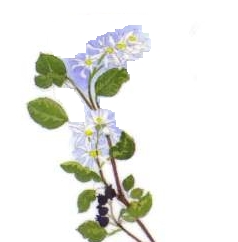
News/Reports
Gilnockie Creek Overview: Physical and Biological
ORIGINAL PURPOSE:
To provide an undisturbed area for silvicultural research on western larch, and a genetic bank for that species.
Physical: The reserve lies on the relatively flat valley bottom of Gilnockie Creek at its confluence with the Yahk River, which drains southward into Montana. Rounded, forested summits of the Yahk Range (to the west) and McGillivray Range (to the east)mostly rise to the 1700-2000 m level. Regional bedrock is largely sedimentary. Soils in the reserve are mostly Brunisols, characteristic of fairly open forest stands.
See the complete PDF: Gilnockie Overview.
Biological: Fine, tall stands of mature, relatively disease-free western larch trees are the major feature of this reserve. The best growth by this shade-intolerant species is made on deep, porous, moist soils typical of much of the reserve. Both mature and immature larch stands are present. Tree diversity in the reserve is low, western larch and lodgepole pine providing almost all arboreal cover.
Two communities dominated by western larch occur here and both usually contain some lodgepole pine. In one type the understory dominants are low Oregon-grape, pinegrass, and cow-wheat; in the other soopolallie, common juniper and kinnikinnick are characteristic. Lodgepole pine stands with low Oregon-grape, silky lupine, and pinegrass also occur in small areas. Imperfectly drained sites support juvenile lodgepole pine, mountain alder, red-osier dogwood, and wild sarsaparilla.
Two communities have been described in a centrally located wetland which is surrounded by larch woods. The wettest is dominated by beaked sedge, bulbous water-hemlock, and aquatic mosses; the less saturated area by bluejoint and trailing raspberry. Sweet marsh butterweed considered a very rare plant in British Columbia, occurs in the wetland.
Moose, elk, white-tailed deer and mule deer occur in this area, and one or more has heavily browsed willows and saskatoon berry. Birds noted in the reserve include the solitary vireo, American kestrel, ruffed grouse, spruce grouse, black- jay.
Blue Listed: hybrid white spruce – black gooseberry – wild sarsaparilla association
Flor a
The wetland areas of this reserve may be at risk of drying as temperatures rise and hydrology changes.
The Montane Spruce (now ICH in this location) forest systems are projected to decline in area, and be replaced by coniferous forest systems adapted to warmer, drier climatic conditions.
Adjacent and surrounding logging and roads are making the reserve, in essence, an island.
This reserve comprises one of few areas in the province where old-growth stands of western larch are preserved.
SCIENTIFIC NAMESOF SPECIESMENTIONED IN THE GILNOCKIE CREEK ER
ACCOUNT
alder, mountain (Alnus incana ssp. tenuifolia) bluejoint, reedgrass (Calamagrostis canadensis) butterweed, sweet-marsh (Senecio hydrophiloides) cow-wheat (Melampyrum lineare var. lineare) dogwood, red-osier (Cornus stolonifera) gooseberry, black (Ribes lacustre)
juniper, common (Juniperus communis) kinnikinnick (Arctostaphylos uva-ursi) larch, western (Larix occidentalis) lupine, silky (Lupinus sericeus) Oregon-grape, creeping (Mahonia repens) pine, lodgepole (Pinus contorta var. latifolia) pinegrass (Calamagrostis rubescens) raspberry, trailing (Rubus pubescens var. pubescens) sarsaparilla, wild (Aralia nudicaulis)
Saskatoon (Amelanchier alnifolia)
sedge, beaked (Carex utriculata) soopolallie (Shepherdia canadensis) spruce, hybrid white (Picea glauca x engelmannii) water-hemlock, bulbous (Cicuta bulbifera) willow (Salix spp.)
Fauna
Chickadee, Black-capped (Poecile atricapillus) Crossbill, Red (Loxia curvirostra) Deer, Mule (Odocoileus hemionus) Deer, White-tailed (Odocoileus virginianus) Elk (Cervus canadensis)
Grosbeak, Evening (Coccothraustes vespertinus) Grouse, Ruffed (Bonasa umbellus) Grouse, Spruce (Falcipennis canadensis) Jay, Gray (Perisoreus canadensis) Kestrel, American (Falco sparverius) Moose (Alcesamericanus) Nucifraga columbiana) Vireo, Solitary (Vireo spp.)
